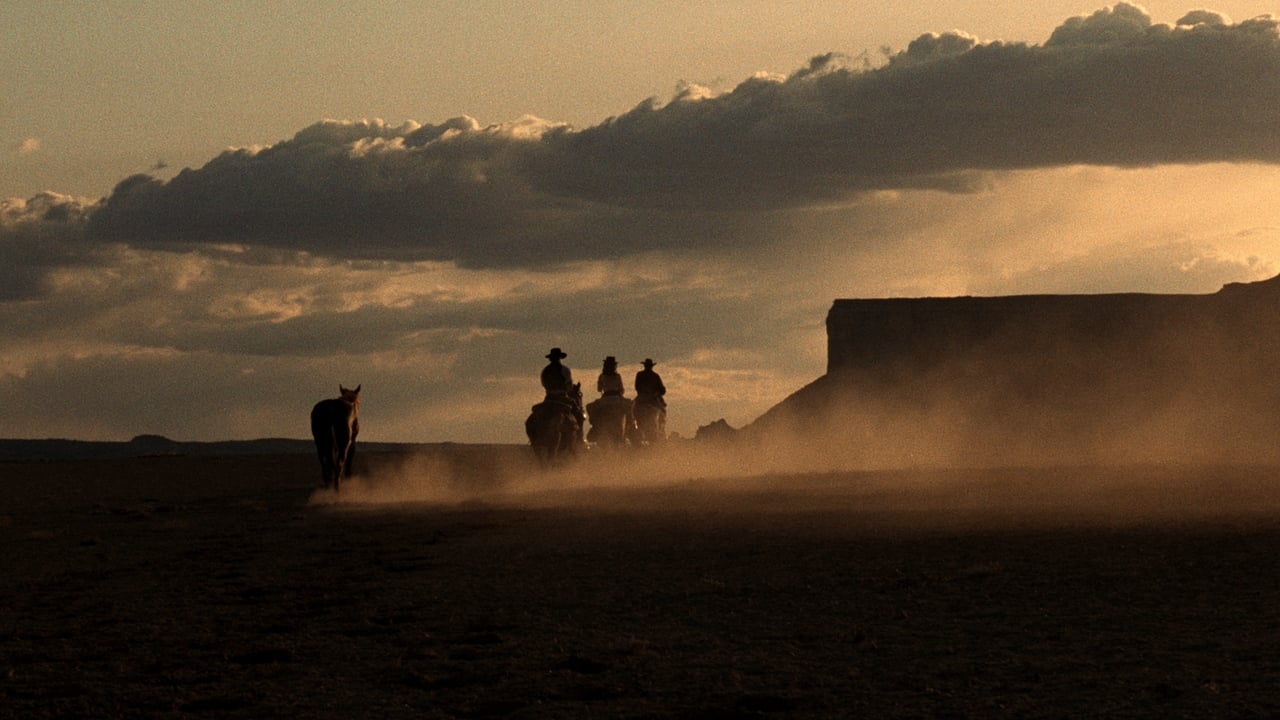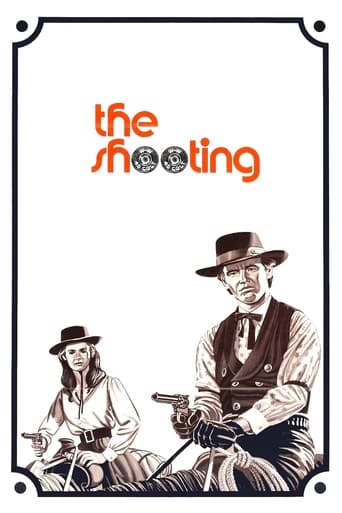

Mysterious woman (Millie Perkins) hires two men, former bounty hunter Willet Gashade (Warren Oates) and his slow witted friend Coley (Will Hutchins) to accompany her to a town located on the other side of the desert. The group is followed by slick gunslinger (Jack Nicholson) who seems to want to kill them all. The woman never says her name or why she's following someone. For some reason, she is out for revenge.The story is quite simple with some not so obvious twists. There isn't much backstory of the characters and not much dialogue, but actors (especially Warren Oates and Jack Nicholson) fill the parts enough substance to make them interesting. Millie Perkins is also good as a woman who is targeted only to complete her mission without showing any remorse or sympathy towards her companions. It is very easy to start hate her. The slow burning tension is in the air throughout the film when characters battling with desert and with themselves. The haunting musical score lays the veil of never ending threat over the head of Willet and Coley.'The Shooting' has been called Kafkaesque western, existential western and the very first acid western. I agree with all these statements. Thanks to well balanced and wonderfully composed tracking shots and disorienting close-ups together with mystery the 'The Shooting' feels more like a (acid)trip. Revenge story works on many levels because there aren't much exposition - the motives of all the main characters remain hidden until the very last minute of the film. The film tricks us even with its climatic but ambiguous abrupt ending that is much more straightforward when to think about it - one of those rare moments where confusing ending actually answers to more questions than it raises.
... View MoreWillet (Warren Oates) returns to his claim only to find that his partner is dead, his brother gone and a simple-minded young man minding the place. Soon an odd woman (Millie Perkins) arrives and offers Willet a ton of money to guide her through the desert. He insists they bring along the simple guy and they get moving. However, it soon becomes apparent that she isn't being very honest with them. Why does she NEED to get there and why the big hurry? She claims the reason is unimportant but it soon seems as if she's tracking someone...and when a nutty gunman (Jack Nicholson) meets up with them, it's dead certain they're looking to do something to someone. The problem is that if they try to back down now, their new 'friend', the gunman, will blow their heads off! So what's next? See the film.The casting of Jack Nicholson might seem silly today, as his character was so unlike the typical Nicholson role. However, in 1966 there was no 'typical Nicholson role'...and back then, accepting him as a nasty gunman would have been easier to except back in the day.Overall, this is a very simple story but also well done. It makes the most of its budget, cast and story. Not a must-see western but clearly one worth your time.
... View MoreShrewd bounty hunter Willett Gashade (the incomparable Warren Oates, who's splendid in his first meaty lead role) and his dimwitted partner Coley (amiable Will Hutchins) are hired by an angry and mysterious woman (well played with fierce intensity by Millie Perkins) to track down a man who has run off into the desert. They are eventually joined on their search by lethal gunslinger Billy Spear (a nicely sinister portrayal by Jack Nicholson).Director Monte Hellman relates the absorbing story at a hypnotically gradual pace, makes inspired use of the barren and desolate countryside, and offers a laudably harsh and unsentimental evocation of the old west. Carole Eastman's compelling and philosophical script provides a fascinating and provocative meditation on the duality of the human condition -- Willett and his identical twin brother Coin, who's ultimately revealed as the man they are tracking who apparently killed the woman's child in some kind of tragic accident, represent the contrasting sides of the existential coin pertaining to both good and evil which converge at the climax with catastrophic results -- as well as the ugly and corrosive nature of revenge (the woman shoots a white horse early in the movie and rides a black horse while embarking on her dark journey into the desert, thus symbolizing the savage spiritual damage done to her soul in the name of vengeance). The starling ending packs a devastating punch. Further enhanced by Gregory Sandor's beautifully stark cinematography and Richard Markowitz's moody score, this film completely deserves its cult status.
... View MoreIt is difficult to tell if the movie provokes so many questions deliberately or if Roger Corman simply tore a bunch of pages out of the script to save money leaving the editors the job of turning it into something? Millie Perkins is over the top and ridiculous as the mystery woman, shrill and abusive at every turn. Nicholson is likewise over-the-top, mean and threatening far beyond what the scene calls for. This is an early role for him to be sure but compared to the composure Oates has on screen he looks like an amateur. I will give Jack credit for being quick on the draw. Even if Monte snipped a couple of frames to make it look faster you can tell he really worked on it. This film suffers from the same hatchet editing that so many 70's films have. It is a pity that the Great Warren Oates died so young. He gives a terrific performance, natural and believable. A lot has been said by reviewers and even by Monte himself about the film recalling some of the National feeling about the political assassinations of the 60's. I just don't think this film has all that on its mind.
... View More